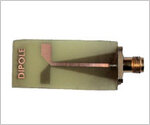ji3n
Newbie level 5
Hi, i am trying to design a koch fractal dipole antenna for a GPS with frequency of 1.5GHz, my supervisor says that my antenna needs a ground. But the thing is i thought dipole antenna doesnt need a ground? Any kind advice will help a lot.. thank you:wink:
